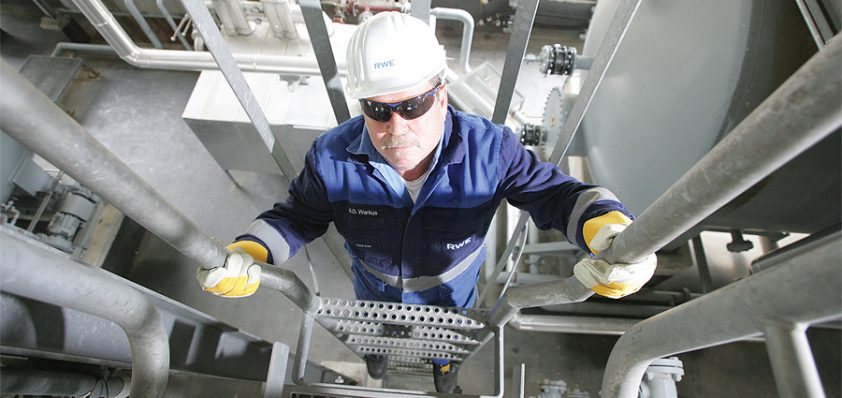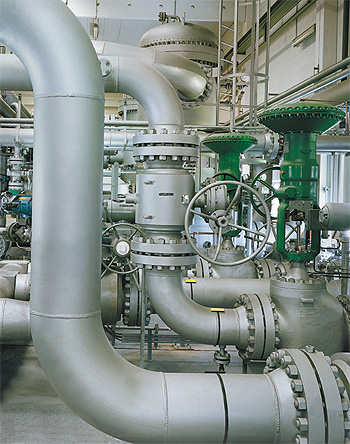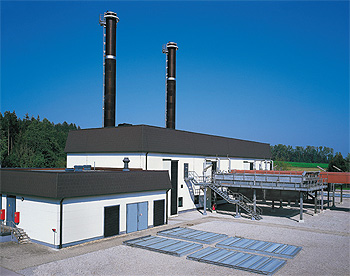
RWE DEA Gas Storage Facilities
Storing potential
As one of Europe’s five leading electricity and gas companies, RWE is active in the production, trading, transmission and supply of electricity and gas.
Employing more than 70,000 people to supply over 16 million customers with electricity and approximately eight million customers with gas. In the fiscal year 2009, RWE recorded roughly 48 billion euros in revenue. The business is the leading power producer in Germany, the second in the Netherlands, and third in the UK. Outside of Europe, the company’s market position in Central and South-Eastern Europe is being expanded continuously.
 Through RWE Dea, the group is successfully active in the gas and oil production business in Europe, Northern Africa and the Caspian region. RWE Dea is headquartered in Hamburg, and is an international operator in the field of exploration and production of natural gas and crude oil. The company deploys state-of-the-art drilling and production technologies along with the vast know-how and skills acquired in more than 110 years of corporate history. RWE Dea is also a leader in terms of safety and environmental protection. With stakes in production facilities and concessions in Germany, the UK, Norway, Denmark and Egypt, RWE Dea also holds exploration concessions in Algeria, Ireland, Libya, Mauretania, Morocco, Poland and Turkmenistan. Furthermore RWE Dea also operates large subterranean storage facilities for natural gas in its primary market, Germany. Within the RWE Dea subsidiary, the company operates a gas storage provision with three gas storage facilities across Germany. Natural gas storage facilities are a fundamental factor in responding to seasonal fluctuations in demand, as well as safeguarding gas supplies at all times. At peak times on very cold winter days demand can be five or six times higher than on warm summer days, and so in summer when demand is low, natural gas can be injected into the underground storage facilities and withdrawn again in winter when demand is high. To be able to meet this demand sufficient quantities have to be stored safely to ensure supply even during peak periods.
Through RWE Dea, the group is successfully active in the gas and oil production business in Europe, Northern Africa and the Caspian region. RWE Dea is headquartered in Hamburg, and is an international operator in the field of exploration and production of natural gas and crude oil. The company deploys state-of-the-art drilling and production technologies along with the vast know-how and skills acquired in more than 110 years of corporate history. RWE Dea is also a leader in terms of safety and environmental protection. With stakes in production facilities and concessions in Germany, the UK, Norway, Denmark and Egypt, RWE Dea also holds exploration concessions in Algeria, Ireland, Libya, Mauretania, Morocco, Poland and Turkmenistan. Furthermore RWE Dea also operates large subterranean storage facilities for natural gas in its primary market, Germany. Within the RWE Dea subsidiary, the company operates a gas storage provision with three gas storage facilities across Germany. Natural gas storage facilities are a fundamental factor in responding to seasonal fluctuations in demand, as well as safeguarding gas supplies at all times. At peak times on very cold winter days demand can be five or six times higher than on warm summer days, and so in summer when demand is low, natural gas can be injected into the underground storage facilities and withdrawn again in winter when demand is high. To be able to meet this demand sufficient quantities have to be stored safely to ensure supply even during peak periods.
RWE Dea’s gas storage facilities division is split across three facilities in Germany, Wolfersberg, Inzenham-West and Breitbrunn/Eggstätt. All of these are underground porous facilities, which are particularly suitable for safely storing large quantities of natural gas. The caverns were filled with gas millions of years ago, when it accumulated in the pore spaces and fractures of underground limestone and sandstone beds. In the 1960s and 1970s natural gas was produced from these reservoirs. Nowadays, natural gas is stored there during low-off take periods and supplied to users when demand peaks. Underground porous facilities are naturally safe reservoirs that have proved their leak-proof qualities over millions of years.
Every natural gas storage facility is linked to the supply grid via an underground pipeline. Gas is transferred to the storage facility and fed back into the supply grid through this pipeline. Incoming gas first flows through a filter, which separates solid particles and liquids. Then the gas flows through a calibrated volume meter. The gas pressure has to be increased to inject the gas into the storage facility. This is done in compressor units powered by gas engines or turbines. Gas coolers remove the heat generated during the compression process. Then the gas is pumped through high-pressure pipes into the wells and injected into the storage horizons.
Each time a customer requests storage access, the business investigates whether there is sufficient free storage capacity for the desired period in the intended storage, by looking at working gas volume, injection and withdrawal capacities. The free storage volume is calculated by subtracting the storage capacity already reserved for all existing storage customers from the storage volume that is technically available at the specific time.
volume, injection and withdrawal capacities. The free storage volume is calculated by subtracting the storage capacity already reserved for all existing storage customers from the storage volume that is technically available at the specific time.
As part of this process, RWE Dea will offer free storage capacities at its Inzenham West natural gas storage facilities from April 2012. Storage capacity for 500 million cubic metres of working gas will be available at the natural gas storage facility, which is located in southern Bavaria and is connected to the network of pipelines operated by E.ON Gastransport. The former natural gas reservoir at Inzenham-West has been operated by RWE Dea as a natural gas storage facility since 1982. Sophisticated technology and auspicious geological structures have allowed a high-performance underground storage facility to be established in the area, and the RWE Dea storage facilities division has 25 proud years of safe and successful operation under its belt.
Due to its large volume, the porous reservoir formation at Inzenham-West provides ideal conditions for seasonal structuring. This provides both security of supply for cold winter days and allows for fluctuations in the volume of gas imports. Efficient links to the market area of NetConnect Germany means that the facility will also be of interest to traders seeking to participate in the emerging spot and futures trade. With a view to the long-term storage and supply of imported gas, RWE Dea has a strong basis for future growth, providing a service that is in high demand in the industry.
RWE DEA Gas Storage Facilities
Services: Gas storage